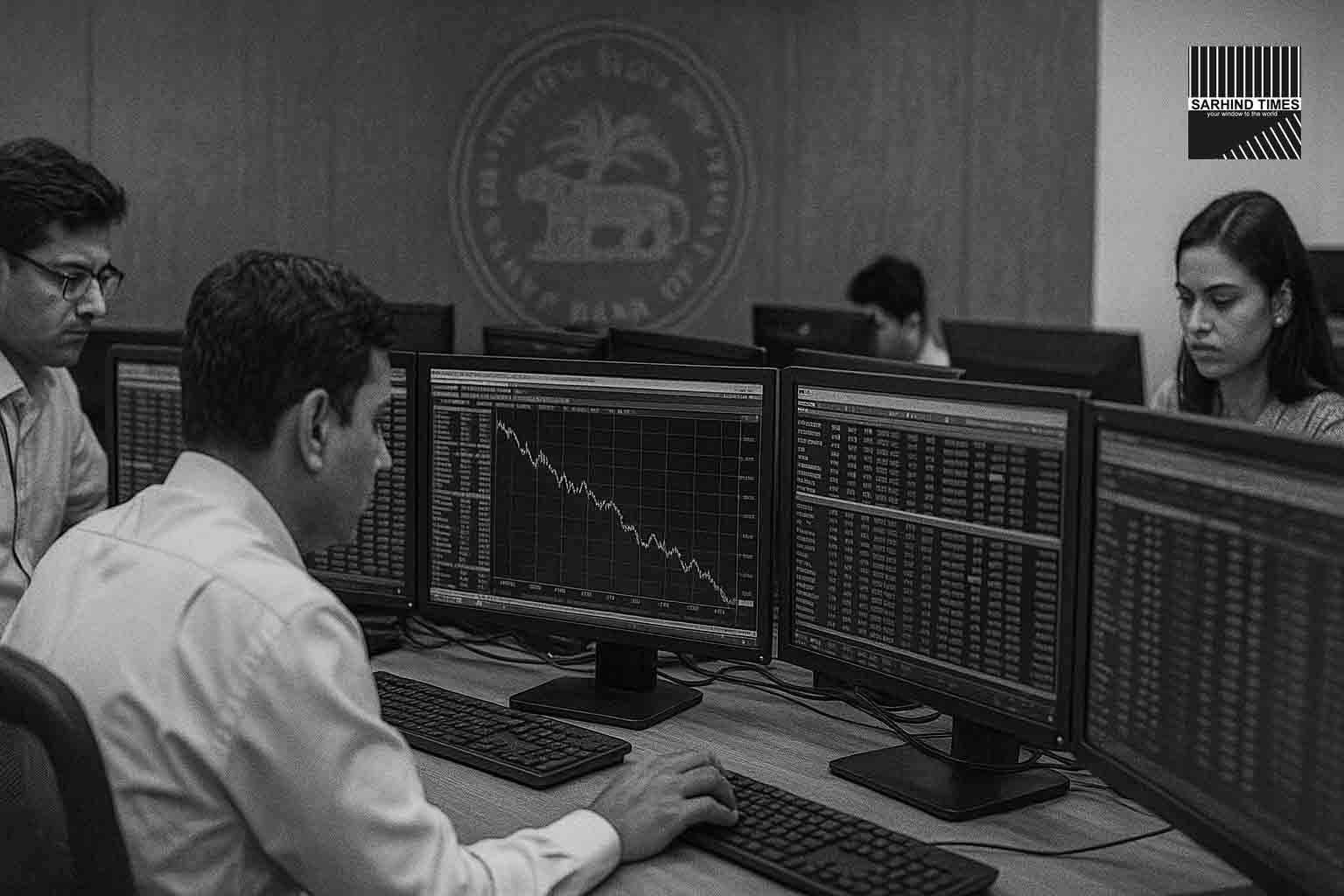The Indian rupee has once again entered uncharted waters. On Tuesday and Wednesday, the currency fell to fresh lifetime lows, briefly touching the 88.75–88.80 per dollar band, before stabilising on suspected intervention by the Reserve Bank of India (RBI). For India’s policymakers, exporters, importers, and everyday consumers, the rupee’s slide is more than a headline—it is a mirror reflecting global headwinds, domestic vulnerabilities, and the delicate balancing act of economic management.
This article examines the factors driving the rupee’s fall, the RBI’s strategy, the reactions from exporters and importers, and what it means for India’s economy, markets, and ordinary households.
The Slide: How We Got Here
Currency traders point to a cocktail of pressures:
- US Visa Fee Hike: The recent increase in visa fees could dent flows from India’s IT services sector, a major source of dollar inflows.
- Tariff Tensions: Escalating tariff disputes between India and some of its trading partners have dampened sentiment.
- Portfolio Outflows: Foreign institutional investors (FIIs) have continued withdrawing funds from Indian equity and debt markets, adding to rupee weakness.
- Global Dollar Strength: The US dollar index remains elevated as investors seek safety amid global uncertainties.
Together, these factors created a perfect storm that dragged the rupee to historic lows.
RBI’s Role: Measured Depreciation, Not Panic
Traders believe the RBI is walking a tightrope. While the central bank has been spotted selling dollars to smooth volatility, it appears to be allowing a measured depreciation.
- Why Allow Depreciation? A weaker rupee supports exporters by improving price competitiveness in global markets.
- Why Intervene? Excessive or disorderly depreciation risks imported inflation, destabilising markets and eroding investor confidence.
The RBI’s goal seems to be stability—not defending a particular level but preventing panic.
Exporters: A Temporary Edge
Exporters, especially in IT services, textiles, and pharmaceuticals, welcomed the weaker rupee, which boosts dollar revenues. However, many are cautious:
- Volatility Worries: Sudden fluctuations complicate pricing and hedging strategies.
- Uncertain Demand: Global slowdown risks could offset currency gains.
As one exporter noted, “A weaker rupee is good on paper, but if clients cut orders or demand discounts, the advantage quickly disappears.”
Importers: The Cost Pain
Import-reliant sectors are already feeling the heat.
- Electronics & Gadgets: Higher import costs could raise retail prices for smartphones, laptops, and consumer electronics.
- Energy & Fuel: Oil marketing companies face squeezed margins if crude remains high and the rupee stays weak.
- Core Components: Manufacturing sectors dependent on imported machinery and parts are vulnerable to rising costs.
Consumers, too, may soon feel the pinch—especially in fuel prices and imported goods.
Inflation Watch: The Domino Effect
Economists warn that a persistently weak rupee could stoke imported inflation.
- Fuel: Higher costs for crude oil feed directly into petrol, diesel, and transport prices.
- Core Inflation: Electronics, machinery, and components could see price hikes.
- Food Chain: Higher fuel costs often push logistics costs up, affecting food inflation.
The RBI will need to calibrate between currency management and inflation control—a delicate balance.
Market Sentiment & Strategy
Markets are now eyeing:
- US Economic Data: Strong US data could keep the dollar elevated, pressuring the rupee further.
- North Block Guidance: Any government measures to calm markets—such as easing capital inflows or incentives for exporters—will be closely watched.
- Corporate Strategy: CFOs are being advised to refresh hedging strategies and diversify funding sources.
For retail investors, analysts recommend caution on overseas investments and careful monitoring of NRI remittances.
Global Context: Emerging Market Stress
India is not alone. Many emerging market currencies are under pressure due to:
- Strong US dollar and yields.
- Commodity price volatility.
- Geopolitical tensions affecting global trade flows.
Yet, India’s relatively strong forex reserves (over $650 billion) and robust macro fundamentals provide a buffer against crisis-level scenarios.
Long-Term Outlook
The rupee’s trajectory will depend on:
- Trade Balance: Sustained current account pressures could weaken the currency further.
- Reforms: Long-term structural reforms—boosting manufacturing, diversifying energy imports, and expanding domestic capital markets—are critical.
- Global Shifts: US interest rate paths, China’s growth story, and geopolitical realignments will all shape India’s currency future.
In the near term, most analysts expect the RBI to continue smoothing volatility, keeping the rupee in a broad 88–90 per dollar band.
Conclusion
The rupee’s slide to record lows is a reminder that currencies are not just numbers on a screen—they affect everything from corporate profits to household budgets. While exporters cheer, importers brace, and the RBI manages, the big question remains: can India turn short-term pain into long-term gain by leveraging competitiveness, attracting investment, and building resilience?
For now, one thing is clear—the rupee’s journey will remain at the heart of India’s economic narrative this season.
#Rupee #Forex #RBI #EmergingMarkets #ITServices #Trade #Tariffs #IndiaEconomy























+ There are no comments
Add yours